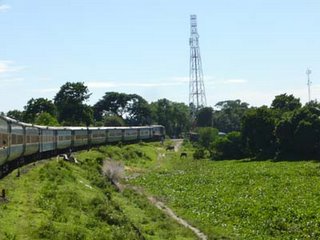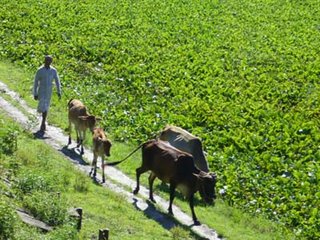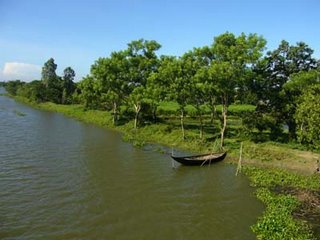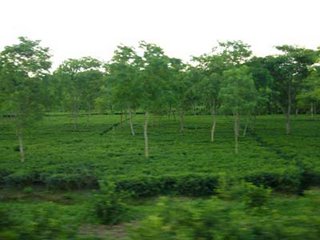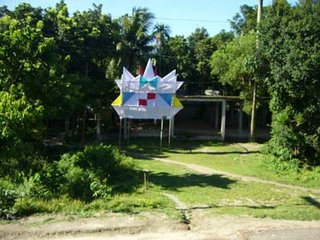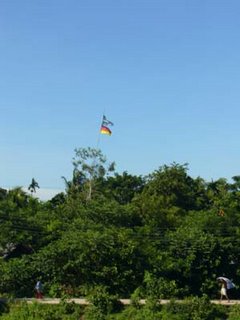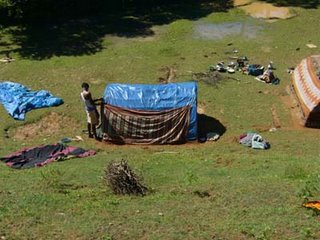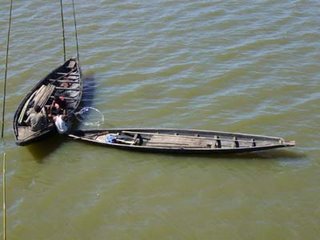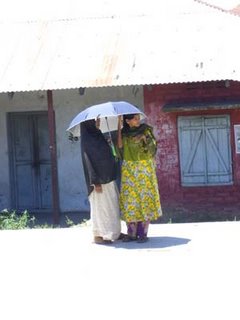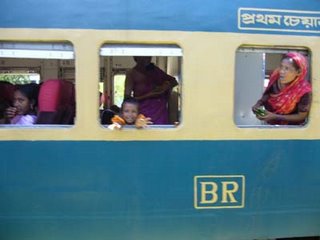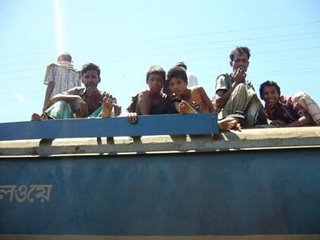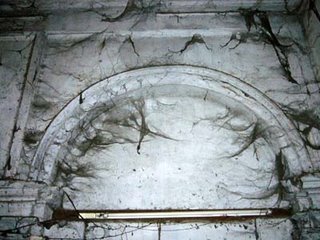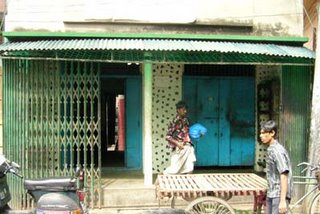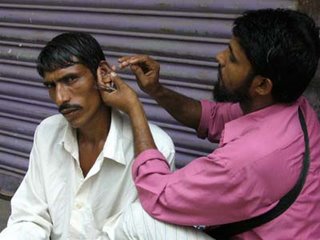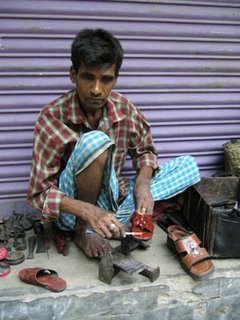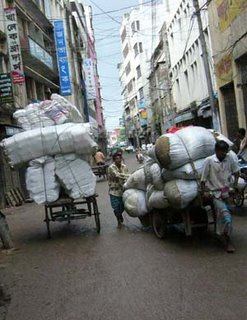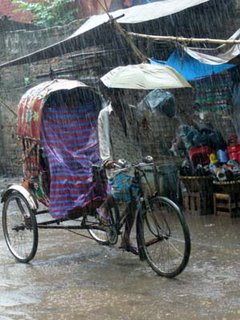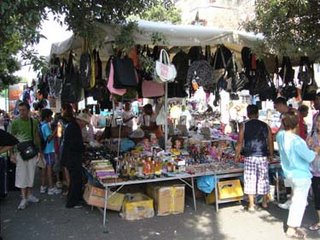Yesterday I went for a 40-mile bike ride through the tea gardens in Srimongol. With me was Stefan (a biking buddy) who planned this trip and came prepared with an older edition of Lonely Planet Bangladesh with a map of this area (the current edition does not.) We started out in Kamalganj and biked in a loop through many tea estates including Srigobindapur, Dolai, Balicchera, Husseinabad and Phulbari.
The starting point for this loop was the HEED bungalow in Kamalganj. From there we followed the main road towards Shamshernagar until reaching a large intersection, where we turned right. Then we pretty much followed this road all the way, looping through various gardens and emerging on the main road again near Srimongol.
The road varied from paved to brick to sand. We did not encounter significant mud despite the rainy season.
It was a daytrip from Dhaka. Left Dhaka by car: 6:30am; arrived at Kamalganj: 9:30am; done biking: 3:30pm; left for Dhaka by car: 4pm; arrived home: 8:30pm.
It was beautiful in a serene, peaceful kind of way. Here are some pictures. Many thanks to Stefan for taking the initiative for the trip and navigating.
We ran into some spectacular landscapes. In the distance it was raining, but we luckily managed to stay dry:

The path was pretty though the brick portions of it jarred every bone in my body!

Many people used biycles in the villages. The boy in the foreground is too small to sit on the saddle but can ride by threading his leg through the frame's triangle. Later we met two boys who had bicycled from Shamshernagar to Srimongol (19km) for fun.

Once we lost our way and ran into these kids in a village...

... and then this Mohish (water buffalo) with whom I was very careful not to get into an argument!
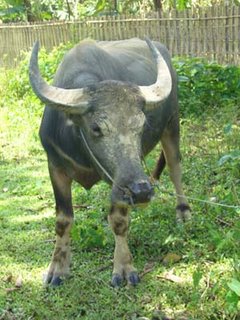
School was over near Srigobindopur:

This father and son pair were working in the tea field:
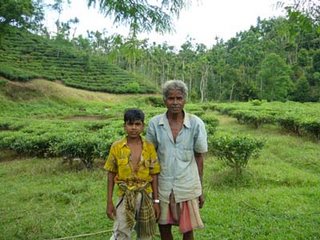
In the garden, women waited to weigh the tea they had collected. Life must be hard when so much of it depends on
weight - be it tea-leaves, rubber-latex, fruits, firewood or fish.
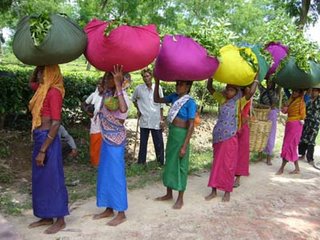
Other workers got a lunch break...

...While a boy offered guavas for sale near a labor village.

On a mandap at the foot of a large tree were remains of a prayer offering:

A drying sari lit up the landscape...

... as did this group who had just finished their weighing:
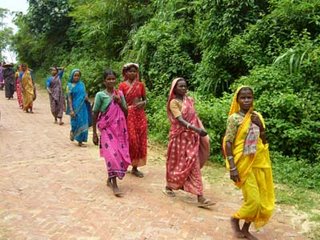
Meanwhile, it was time for the Friday shave for one of the men -
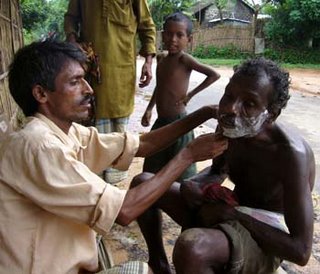
...but - as usual - the children had a better idea!

Postscript: Several years ago, I photographed the tea workers extensively. You can see some of them in my photo
exhibit at the Fixing Shadows online Gallery, for example, this
girl
